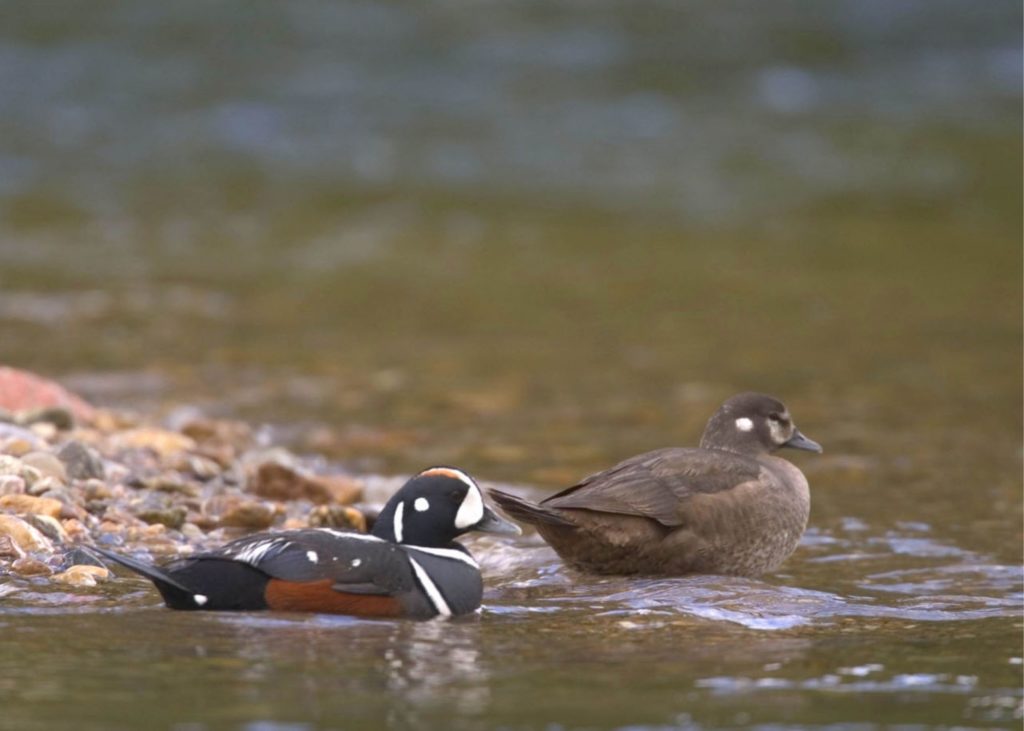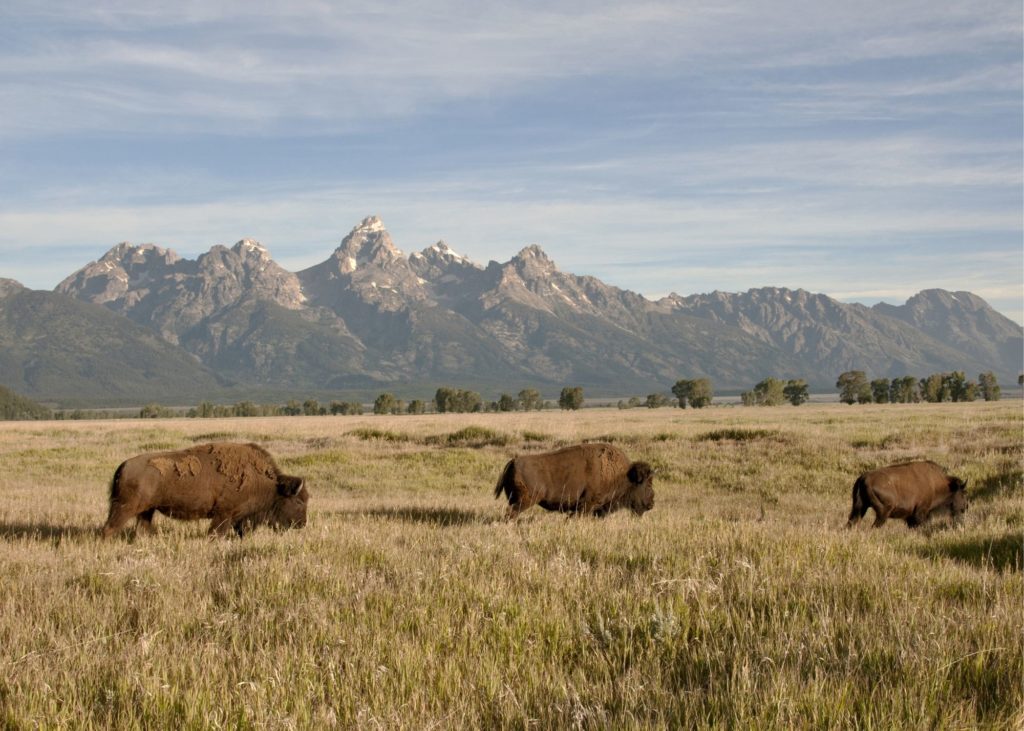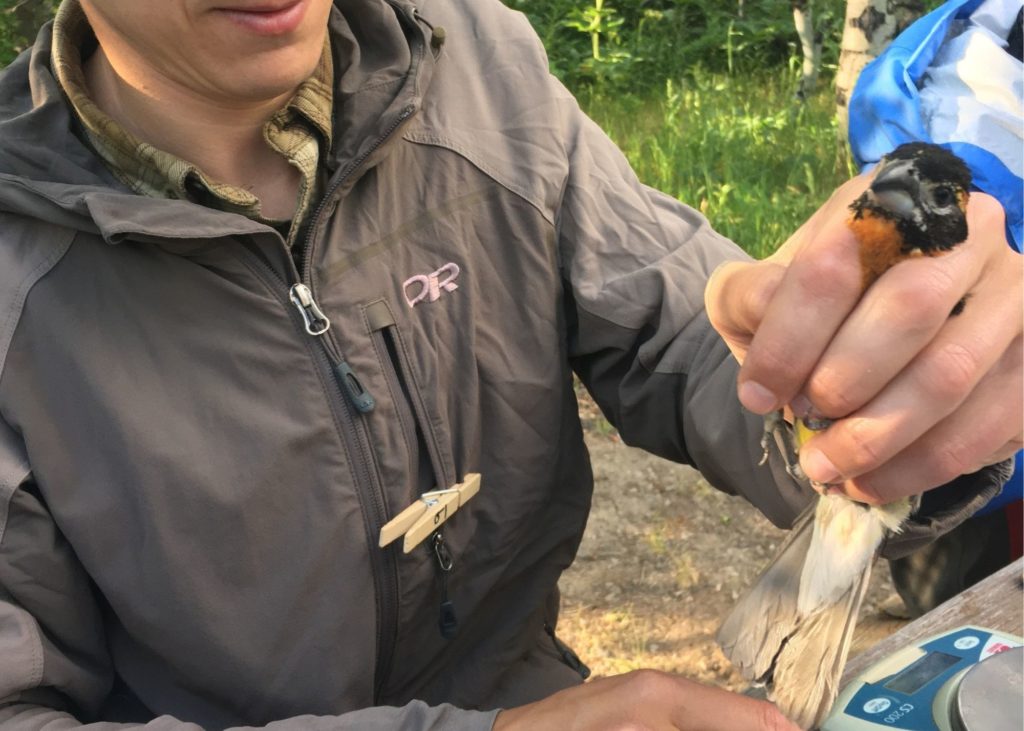By John Stephenson, Grand Teton National Park wildlife biologist
While people flock to Grand Teton National Park for its spectacular wildlife often hoping for a glimpse of an elusive wolf or grizzly, most visitors are all but guaranteed sightings of remarkable bird species in their travels. Birds are ubiquitous in the park across elevations, seasons, and habitats. Charged with preserving its natural resources, the park relies on partnerships and collaborators to gather invaluable data on the many sensitive bird species in need of conservation. The avian program at Grand Teton National Park operates with the support of other agencies, non-profit organizations, research partners, and a small crew of seasonal staff and volunteers. The birds of the park, like most other wildlife populations, venture beyond the park boundaries, and understanding and protecting these species requires extensive collaboration.

At Grand Teton National Park, we are fortunate to have an abundance of bird species and associated long-term datasets for sensitive populations. Notably, greater sage-grouse lek counts date back to the late 1940s and nest productivity data for bald eagles, trumpeter swans, and peregrine falcons were first recorded in the 1980s. For bald eagles and peregrines, annual nest monitoring originated due to their listing under the Endangered Species Act and tracking productivity of these species allows us to follow population trends. Data for other species, such as osprey and great blue herons, help us assess the health of important and often scarce habitats.
In the park, we celebrate the vast amount of protected habitat that is home to stable and healthy bird populations. When the potential for conflict with recreationists exists, the park establishes closures to protect nest sites. We follow seasonal and buffer distance guidelines from the US Fish and Wildlife Service to maintain compliance with the Migratory Bird Treaty Act. Most anglers and boaters are aware of the signed ½-mile no-stopping zones along the Snake River to protect occupied bald eagle nests throughout the summer. Similarly, a popular climbing route in the park has been seasonally closed for years to protect nesting peregrine falcons. In both cases, the public has supported and adhered to these closures which has helped the success of both species.

While bald eagle, osprey, and peregrine populations have recovered and are stable within the park, other species are especially vulnerable. For species like greater sage-grouse, trumpeter swans, and common loons, the park participates in cooperative working groups comprised of many stakeholders all with the goal of conserving species on a regional scale across many jurisdictions. These working groups identify threats and causes for population declines and then provide recommendations to address concerns. For example, research has found that sage-grouse in Jackson Hole are limited by available winter habitat, and therefore, the local working group has promoted the preservation of sagebrush habitat and the restoration of the Antelope Flats Hayfields. With input from agency partners and the Wyoming Wetlands Society, regional efforts focus on protecting trumpeter swan nest sites and installing nest rafts to address sensitivity to human disturbance and fluctuating water levels. Common loons have also been helped in recent years by the collective expertise of Biodiversity Research Institute, the Ricketts Conservation Foundation, and our state and federal partners, resulting in the most known territorial pairs in the ecosystem since monitoring began in the late 1980s.

Additionally, we issue about a dozen bird-related research permits every year which increase our capacity to understand and ultimately preserve the birds that live in the park. Contributions from researchers working in cooperation with the park have identified migration routes and wintering areas for osprey (Craighead Beringia South), long-billed curlews (Boise State University), harlequin ducks (Biodiversity Research Institute), and rough-legged hawks (Craighead Beringia South and Teton Raptor Center); documented great gray owl and northern goshawk productivity (Teton Raptor Center); discovered a new sharp-tailed grouse lek (University of Wyoming); investigated songbird response to habitat restoration in Antelope Flats (University of Wyoming); surveyed for harlequin duck broods and yellow-billed cuckoos (Teton Conservation District), and documented the nesting ranges of Clark’s nutcracker (Cornell University) and black rosy-finch in the Tetons (University of Wyoming).
Another key project in the park is the Monitoring Avian Productivity and Survivorship (MAPS) bird banding station at the Kelly campus of the Teton Science Schools. This banding site has operated since 1991; is one of the ten longest running MAPS stations in the continent; and has stayed aloft with the generous support of the Teton Science Schools, the Teton Raptor Center, and the Jackson Hole Wildlife Foundation. This site contributes to the understanding of bird population trends throughout their range and has also provided key data locally. Of particular significance was the capture of a yellow-billed cuckoo in July 2000—the only confirmed observation in the park of this federally threatened species.

The birds of Grand Teton have benefited from the interest, expertise, and time of collaborators and partners. Additionally, we value and solicit wildlife observations from the public. Millions of visitors travel through the park every year, drawn by the dramatic scenery and promise of seeing rare or charismatic wildlife. We welcome your reports of common loons, yellow-billed cuckoos, and forest raptors, among many others! From the bald eagle, our national symbol, to the western states’ iconic greater sage-grouse, birds highlight the importance of wild and protected land, the fragility of our natural world, and the power of collaboration.
